

On October 9th Guy Nordenson was presented with the 2017 Richard Neutra Award for Professional Excellence from the Cal Poly Pomona Department of Architecture. Established in honor of Richard Neutra's architectural legacy, the medal recognizes individuals for their dedication to the research and development of new environments in everyday life. Nordenson joins the award's esteemed roster of recipients, which includes Carme Pinós, Tadao Ando, Enrique Norten, Michael Rotondi, and Thom Mayne.
A few hours before Nordenson received the award, Archinect's Orhan Ayyüce had a chance to meet with him at the historic Neutra VDL House. His unique position as a highly creative and visionary structural engineer led to this conversation.
One of the crises that is mentioned so many times in architecture schools is that students have a lack of either studying or understanding structural concepts and not knowing how to be creative with structural design.
Engineers have that problem too. There's a lot of reasons why and maybe the first ones to blame for that are the teachers, including me. Engineering is not integrated as much as it could be into the architectural consciousness I guess—it's in the curriculum but it doesn't mean that people absorb it and make it part of their process. To some extent, it is a function of the interest in form. There's a great deal of emphasis, whether it’s parametrically derived or some other way, that the more original the formal languages, the more compelling the work of that young architect, and the more likely they're going to make a name for themselves. It is the arena in which they are judged by their peers and teachers and in which teachers are judged by each other. It's very much about that progression, and in that sense, not unlike art school where you're trying to make your mark in relation to a body of work and tradition. That doesn't necessarily involve technique to the degree that it might.
That could change and in some ways, in some schools, it does change. Often it has to do with the creativity of the engineers that are teaching. Colleagues in Europe at ETH and Munich, Colleagues at MIT—John Ochsendorf and his team that have been doing a lots of great work with vaulting, using old masonry techniques learned from Guastavino. I think that has an energizing effect because can see how you marry engineering, understanding, and form and sometimes those forms are as dynamic as everybody else’s, but they have the added interest that there is something special in how they are put together. It has a lot do with the cultural interface and flow that happens when you have a lot of creative engineers working with creative architects and others.
I want to specifically ask you about the poetics of structural engineering. What is your experience with it and how do you practice it?
I think it's cultural. You know, for whatever reason, the way design and architecture is taught in the United States hasn't brought that in as vigorously as it has in some other parts of the world. Many people point to Japan where there is a stronger link between the engineers and the architects. Ito is working closely with someone like Sasaki Associates in inventing new kinds of form. If you look at a lot of his latest work, it's deeply influenced by his collaboration with an engineer who is coming up with these morphologically generated organic forms which then Sasaki is adopting, transforming—there is a back and forth happening there. For whatever reason—and I think it's worth analyzing—there are these differences in the cultural context that have an impact.
I was in Hamburg a couple of weeks ago for a conference organized by the International Association of Space and Shell Structures and that's an organization that started 80 years ago by Eduardo Torroja who wrote a book called Philosophy of Structures. It included Candela, Isler, all debating about the appropriateness of different kinds of shell forms. You know, on the one hand something like Sydney Opera House or the TWA terminal at Kennedy Airport, which were considered clumsy from an engineering point of view but energetic formally all the way to the Isler forms and Candela forms—which were both structurally innovative and elegant formally. They talked about, they debated about it, and they cared deeply about whether this was more appropriate than that, this was a perversion of the ideal, and this was closer to the ideal. And today that same group is vigorously arguing about the relationship between computational methods and form and organic examples—the study of flies wings and all kinds of other examples... rigorously looking at how they function in a natural environment and then trying to adopt those lessons into the work that they do. You have a ton of really good engineering companies, many of them clustered around Stuttgart. All of whom are producing extremely creative work which is actually driving some of the architectural discourse around them. It's worth studying why there is that kind of vitality in some places and not in others and maybe it's not a general phenomena but maybe it's something in America that we're not doing as well.
I think we have to analyze where we are at and consider how we can learn from other fields and other countries and find a better way to energize that discourse
In all these examples, what's happening is you have highly energized, creative, ambitious, young engineers—men and women (lots more women than there used to be)—who are driving that agenda and exploring new kinds of forms that are mathematically derived, which are unexpected. I often try to find analogs to think about this and now sitting here in California, in Los Angeles, not too far from Hollywood, you can talk to people involved in the film world and they're pretty sophisticated in the way that they can talk about the contribution of actors, the contributions of cinematographers. When Woody Allen made the movie Manhattan, he went out of his way to finding Ingmar Bergman's cinematographer and brought him to film Manhattan because he wanted to incorporate the look of his cinema photography. Animation, cinematography, music, all of the contributions that come together to making a movie are celebrated. We have the Academy Awards and when you watch a movie, at the end, you have a long list of the contributors. Some are really a force in those teams and people who love movies know that and look to it. And some go into movies and eventually find their way into that and decide, I’m going to be world’s greatest cinematographer and want to drive the conversation through that end. I think we have to analyze where we are at and consider how we can learn from other fields and other countries and find a better way to energize that discourse.
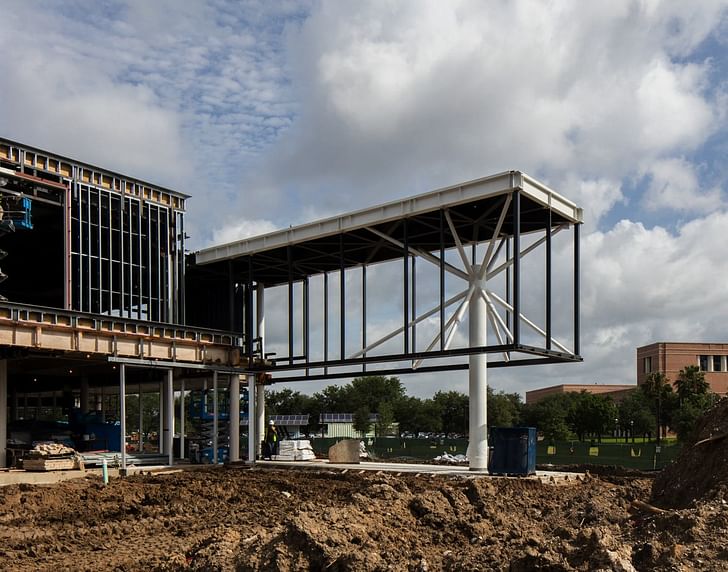
Is there a new interest, that we are looking at, through the inquiry into natural phenomena—learning from it and then applying it to engineering?
Yeah, it's cyclical. That's happened before, people looked to D’Arcy Thompson, people looked at various microscopic forms as inspiration for domes but there's always that group of people who derive new ideas from that. There is a growing interest because of capabilities in making composite structures, ways of using robotic techniques to weave in space with carbon fiber and other kinds of composite materials that you can create large-scale spider-web-like forms that then become an opportunity to learn from how they're made. I think sometimes this happens because somebody takes it on and has the energy to develop a new area. Sometimes it's because the tools become available. I think right now that's a little bit of both.
Can you tell us how you teach engineering, in relationship to architecture, for somebody who does both?
It has evolved. I did a string of studios a couple of years ago which were all organized around the work Donald Judd. One of the things that we looked at was the question of conservation and how, when you're faced with the kind of installation Judd made in Marfa and NY, with the problem of conserving the environment and conserving the works that are included there, his and other people's works, in a way that sustains the atmosphere and the feeling that one has going into it now, given that it deteriorates over time. So there's a technical dimension to that in understanding what environmental influences have, a limited structural aspect.
For the most part it's really finding the interface between the scientific questions and tools of analysis and paradigms and the problem at hand which is partly architectural, partly artistic. And learning from how some of the best thinkers in the world of art conservation—the Getty, or elsewhere, think about this problem. Or even ecological conservation. How do you approach this question with as much sophistication as you can, including as much scientific sophistication. So it's more about teaching the way to bring science and other disciplines together and thinking through what they have in common than it is about structure.
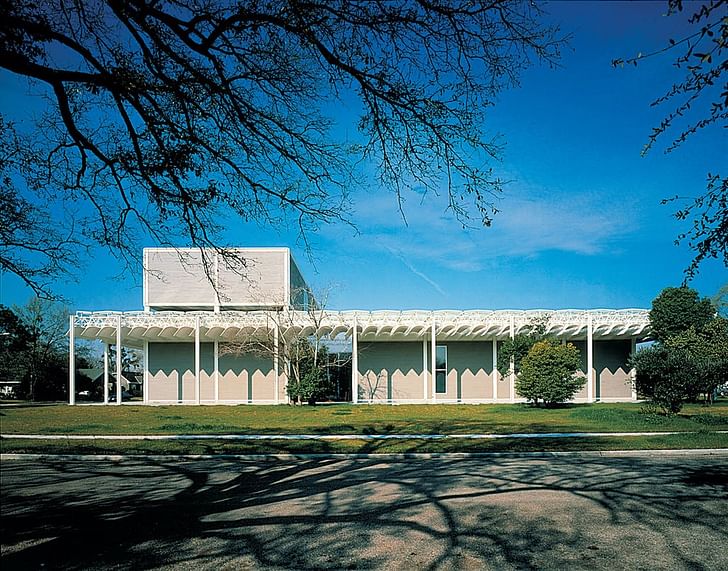
Probably the most continuous thing that I've been teaching in structure is a class that has a lot to do with the development of tools to read particular kinds of projects. I came from a literary background in college and I've always been fascinated with tools of literary criticism and finding ways to apply them to see the broader cultural context of engineering... and look at certain kinds of buildings and projects where there is a remarkable confluence. So one of my favorite is the Menil Collection of Renzo Piano because of the way in which you had this conjunction of a client, several museum directors—Walter Hopps from here, Pontus Hilton from Sweden—and then great engineers. Not just Peter Rice, the structural engineer, but also mechanical engineer Tom Barker, all coming together at a particular moment in their life, wanting to really jump to the next level together. Keep in mind, the influence of Louis Kahn who had done an earlier scheme for the De Menil's, who had been Renzo's teacher, briefly. So all of these really fascinating tributaries are coming together to converge on this particular project.
Ezra Pound had this phrase, "the vortex," which he used to describe those kinds of historical moments where there's this convergence of energy and engineering is part of that. But the engineering is intermingled with all these other cultural and psychological influences. And so I try to help students disentangle that. If you think of the Beinecke Library that Bunshaft did, again you have a remarkable conjunction of client, situation, program. A very idiosyncratic project for Bunshaft. He never did anything quite like it before or after. So how do you account for that? How do you disentangle the threads that are all coming together there and teach the students to appreciate those kinds of projects for all that complexity. There's no one part that doesn't deserve close study and analysis, that you can dig out. You can sort of keep pulling back the layers and there's more and more and more. If that is something you can bring to a project then I think you have a much more interesting time more interesting projects.
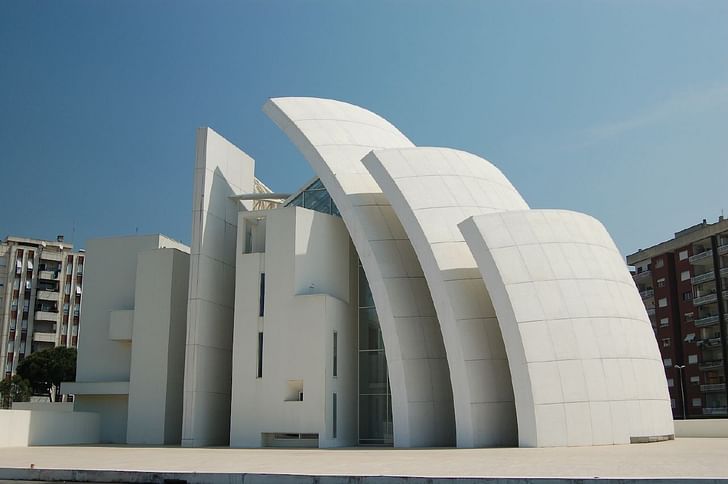
What are the traits of engineers that you see that are unique to the engineering profession?
You know, ironically it has a lot to do with just structure, structure in the sense of framework... when you start a conversation around a project and someone is describing to you a formal concept of programmatic juxtaposition of aspects of the project. When you start to think about materials that you might make it out of, it's not much of a pragmatic choice but also what feels sympathetic to the initial germination. And so you start exploring in conversation the implications in a material sense of certain ideas that someone has started. Are these giant spheres that float like bubbles? What's the metaphor? I work a lot with Steven Holl and Steven often has very specific metaphors. When we did this dormitory together at MIT years ago it was a sponge. So you start to think about what it means and to explore that idea in material terms. And then beyond that.
I always try to stay sympathetic to those initial thoughts and feelings. How does that ultimately translate into the character of the construction itself? If you get it right, there's something magical and theatrical about the actual process of construction. It becomes another aspect that you can stage as a piece of performance which helps sustain and support those early ideas.
I did the Jubilee Church with Richard Meier in Rome. Part of my push on that one was to convince everybody that we make it out of these huge blocks of concrete just for the sake of seeing it get stacked up methodically in a kind of Roman ancient tribal way. Just the fact that it got built that way, as opposed to say a steel structure, we had these giant prefabricated blocks, that added something to the history of the project and to everybody's appreciation. Those all try to tie back to the initial germination of the project and the conversation that it is ultimately trying to support—the elegance and finesse of the initial idea.
Architectural media and press have a lack of bringing in creative structural engineering into the coverage of projects…
It’s the same cultural thing that I was talking about earlier and it goes both ways. I organized a series of lectures in the 90s at MoMA, I called them the Candela Lectures and eventually published a book. And so I got Princeton and MIT together with MoMA and we pooled our money and we were able to invite seven different engineers to come and talk about their work. And we published this book of all their talks from Japan, from Switzerland, from Germany, from all kinds of places, all of a particular generation—born in the 30s roughly, except for Cecil Balmond who is younger than the others. You would think bringing engineers to the Museum of Modern Art, putting them in front of an audience of broad-based people interested in the arts, people interested in architecture, engineering, and then you offer to publish a book of those talks published by MoMA— I mean what better venue can you get? But it was a struggle. You have no idea, to get these essays out of some of these people. Some were very diligent, some we had to write the essay for them. We had to write the essay from the transcript. Some that complained the most were the hardest to get to finish their essay. From their end, they do a pretty bad job. I would say, to any engineer, write a book and tell the world about it. Look at Peter Rice's book which is a terrific collection of stories about his contribution. Very inspiring to young engineers.
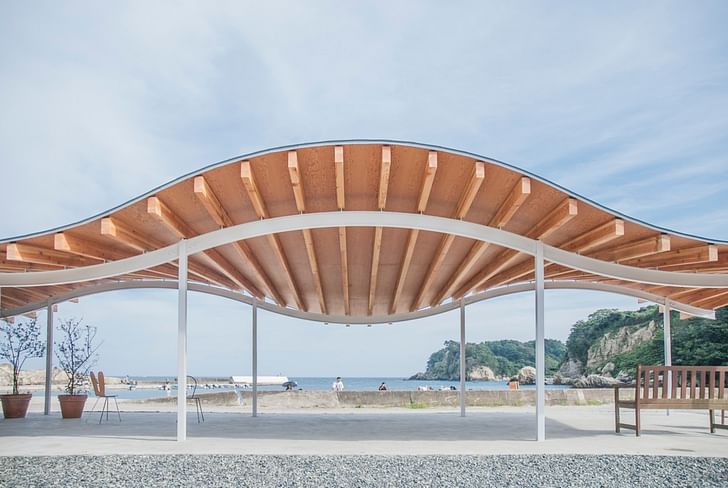
On the other hand you're right about critics... they just don't have the tools, but they're well intentioned. To give you an example again at MoMA... they had a terrific show a couple years ago on Japanese Architecture. The concept of the show was to look at the influences around Toyo Ito—just Ito—and Toyo Ito cleverly said: “no no no it should be a show about everyone that I've influenced.” Very clever. It made for a great show.
So you had SANAA and you had all the other people that have in one way or another been touched by Ito. I was pushing very hard that the show also include the connection that all those architects have to incredibly creative Japanese engineers. There's a very strong tradition going back to Kenzo Tange of these very forceful collaborations between a super talented engineer and a super talented architect. Both have gone to school together because they are trained in the same Universities. Tange with Tsuboi. All these great engineers including today's Sasaki, they are central to the work and Ito would be the first one to say how important they are. You know if you look at the Crematorium that he did that wouldn't have happened without Sasaki not just enabling it, but coming up with the form. It was Sasaki who brought back the whole idea of shell forms for both SANAA and Ito. It was impossible to get that incorporated in the show, largely because it was not familiar to the curators. They didn't have the experience and the tools.
It wasn't part of their education and so they didn't know how to address that relationship. So in the end, we organized a big symposium to complement the show and did something really interesting. I invited my contemporaries from Europe. All of these engineers that are doing so many creative things in Europe, and I put them all together with Bill Baker, chief engineer at SOM. So we had a group together, and they all talked about this long tradition of Japanese engineering. So they, engineers, talking about other engineers and doing a critical analysis of that. It was unusual and a first, to get everybody looking at, in a cultural sense, at their own field but from an international perspective. We need a lot more of that criticism and attention.
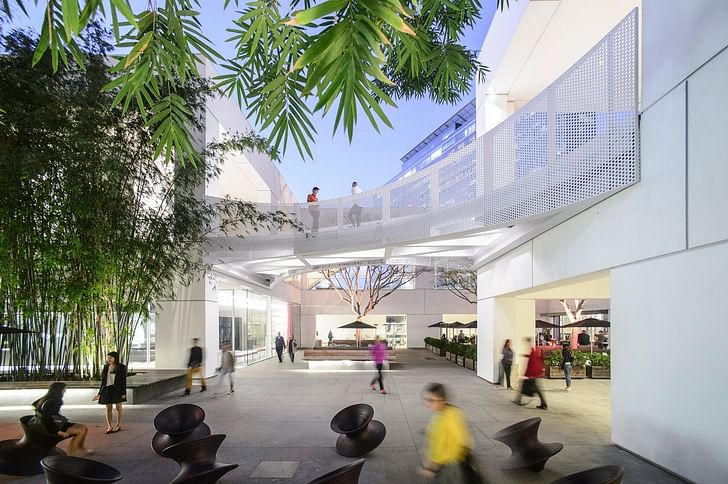
What is your impression of looking at L.A.'s recent architecture or past architecture.
I think the great opportunity of working in L.A. is the climate and the possibility of having this kind of transparency and flow between the inside and the outside. We're sitting here in the Neutra VDL House. The way that Neutra creates this ambiguity of the boundary between all these spaces and what's in the near-field and what is in the distance. It's hard to do that in harsher climates. Hard to do that if you have to hunker down because a hurricane is coming in. If you're in a Northern climate it gets really cold.
I used to live in Berkeley and the one thing that I couldn't get used to was how cold it was in the winter because none of the houses were insulated—everything was single pane. That permeability is great and creates wonderful opportunities for architecture. I think the gentleness of the climate also facilitates the kind of formal explorations that you see among you know Eric Moss, Thom Mayne, and everyone else that has been able to work with a lot of exposed materials that don't need to face the kind of harsh climate that you would get in NY. Gehry's House—you know all that is possible in this welcoming environment.
It's also the tremendous energy that exists in the decentralization of the city. That you move around different neighborhoods and particularly now they just all feel so energized. And you move from you know, Echo Park to Culver City. I've been coming here regularly for more than 30 years and it's evolving and changing but each of these places, as much as they are getting gentrified, the still hold on to a certain grittiness and a certain character that tends to disappear in New York when neighborhoods have transformed.
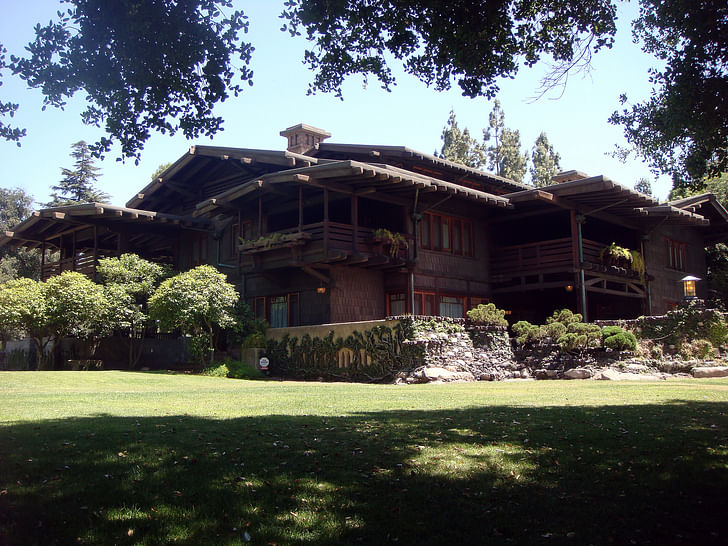
We have some of the best houses in the world here for the reasons you mentions before, the climate. Studying all the way back to Irving Gill, they utilized open air sleeping rooms...
Right. Open air sleeping rooms are typically in the Mediterranean, all over the Middle East and Egypt and everywhere. So you get this influence of those Mediterranean examples. Neutra, or I think maybe it was his wife saying "Why would I ever leave LA?" This is what every Northern European dreams of. I'm half Swedish which is probably why I love it. For Nordics, this is heaven. It's light all the time and you don't have the horrible winters. That is also a way that the Mediterranean examples and fantasies get carried over and rekindled here.
Plus, I think what's important is also the influence, through even earlier architects like Maybeck and Greene & Greene, of the Japanese cultural impact on architecture. Which is also the same indoor/outdoor feeling but with maybe a more close attention to craft. And that's part of it too. Especially with Eames and others, and maybe they're interested in industrial design, the detailing. There is a strong tradition of good craft.
I also want to ask about the institutional scale of buildings
There's some really ugly high rise buildings. It's a shame. We're very good friends with Harry Cobb and I was telling my boys, who are very close to Harry, about how proud Harry Cobb is that his first interstate building is annihilated in the movie Independence Day. So on Saturday night we watched Independence Day and as a result we were looking at the skyline of L.A. and New York when that movie was made. And, you know, Downtown looked pretty good. Not great, there's never really been any great high rise buildings in LA so far. I had one with Harry Wolff—we did a great building but it didn't get built. But now, it's so bad and it's so tacky. It's surprising. It's like the worst kind of Macau, second rate gambling capital. Awful, really awful, it's a shame. But, that aside, Century City is great. Of course, the evolution of the cultural buildings is incredibly important. Disney Concert Hall is one of the great buildings of all time.
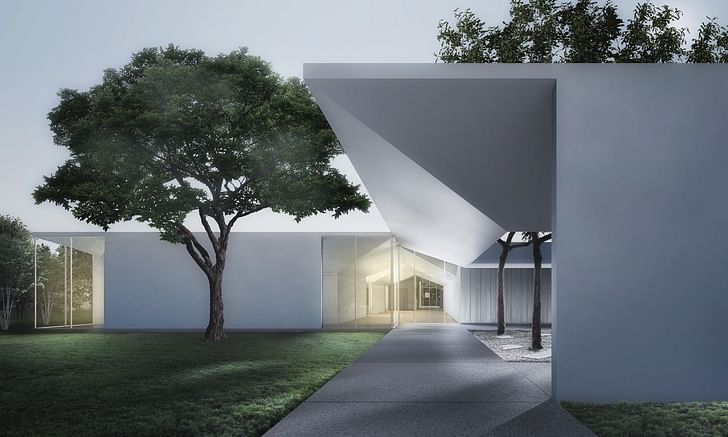
What is your opinion of architecture and where do you see it going?
I respond personally to what I see as the seriousness of certain architects which often has to do with their degree of focus and commitment. It's the work ethic that I admire in certain architects, and I admire it in older generations. I have huge admiration for Frank Gehry, not only because of the work that he produces, but also because of the way in which he has been able to organize incredibly talented peoplearound him. One of the coolest things I ever saw was one time in an exhibition somewhere, the model that had been made for the Lewis House that Gehry worked on for many years where he was able to explore all these different ideas for Peter Lewis. And the model was the very first 3D printed model that they made. I was told there was a couple of crazy Russian guys who rigged up this little gantry system spinning epoxy, programmed in some Rube Goldberg kind of way... and it had this texture and roughness to it as a model that's magical because you see in it, the cutting edge that it represents. They wanted to do this thing in every step of the way throughout—I mean I've tried to keep tabs on their process at least until about 10 15 years ago—and you get people like Dennis Sheldon who is still there who would put together these phenomenally creative ways of producing the model and drawing the computer model, all these steps along the way. And that energy gets embodied I think in the final work. And you know the craftsmanship is part of it but it's also the intellectual craft that went toward that. So I like to attach myself to those architects with that kind of seriousness.
A long-time contributor to Archinect as a senior editor and writing about architecture, urbanism, people, politics, arts, and culture. The featured articles, interviews, news posts, activism, and provocations are published here and on other websites and media. A licensed architect in ...
Paul Petrunia is the founder and director of Archinect, a (mostly) online publication/resource founded in 1997 to establish a more connected community of architects, students, designers and fans of the designed environment. Outside of managing his growing team of writers, editors, designers and ...
No Comments
Block this user
Are you sure you want to block this user and hide all related comments throughout the site?
Archinect
This is your first comment on Archinect. Your comment will be visible once approved.